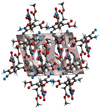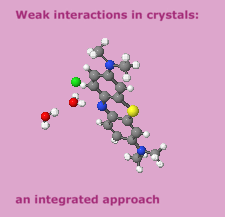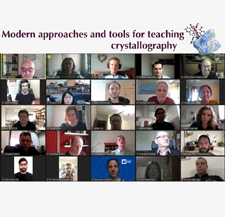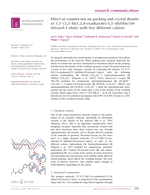issue contents
April 2025 issue
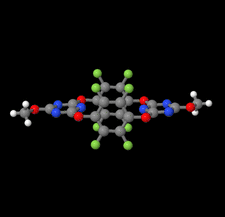
Cover illustration: Tetraoxa[4]arenes, cyclic molecules comprising four phenylene units bridged by oxygen atoms, are notable examples of compound exhibiting polymorphism. In the present study, Kawasaki & Hori [(2025). Acta Cryst. E81, 289–295] have focused their attention on a structural analogue of tetraoxa[4]arene in which the phenylene units are replaced by tetrafluorophenylene and triazine moieties. Two polymorphs, block-shaped (I) and plate-shaped (II), were obtained from a chloromethane solution. While polymorph I had been previously reported, polymorph II was newly identified and exhibited a doubled unit-cell volume with two independent molecular arrangements. The study sought to analyse intermolecular interactions, focusing on π-hole interactions and their role in crystal packing stability, with implications for molecular recognition and crystal engineering.
research communications




























Crystal structure of the possible sulindac impurity 2-(5-fluoro-2-methyl-1H-inden-3-yl)acetonitrile







 journal menu
journal menu
















